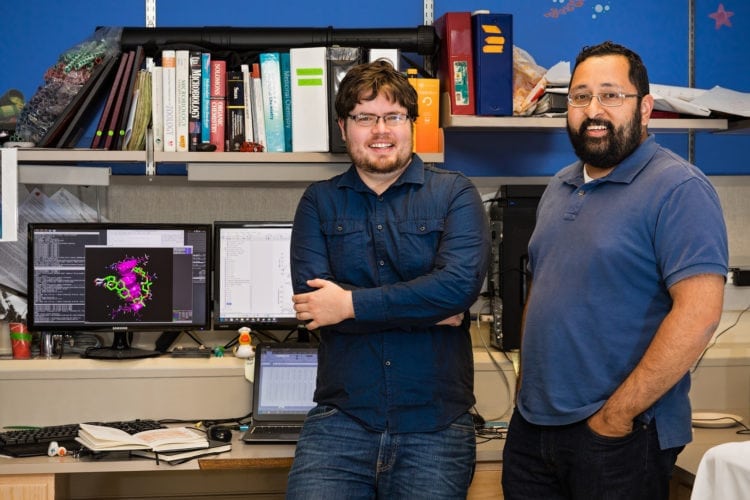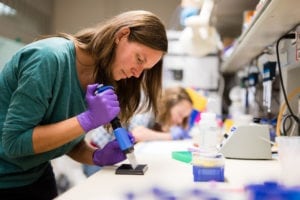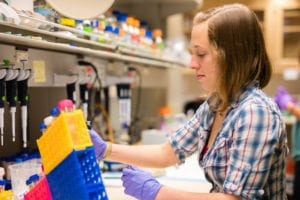
Alzheimer’s disease affects about 5 million Americans, a number projected to roughly triple by 2050. The urgency of this grave population health challenge is with Abhi Nath and his team of researchers every day as they seek new options to treat and manage Alzheimer’s and related diseases. The key appears to lie with a process called protein aggregation, which links Alzheimer’s, Parkinson’s, and Chronic Traumatic Encephalopathy (CTE)—a disease that affects people, such as military veterans and football players, who have suffered concussions or traumatic brain injury.
“At the molecular level, particular proteins in the brain are misbehaving,” said Abhi. A major culprit in Alzheimer’s disease and CTE is a disordered protein called tau. “Proteins are supposed to fold like origami to function. When you have a misfolded protein, they tend to stick together—in the wrong way. That phenomenon of aggregation is the underlying cause of diseases like Alzheimer’s.”
Understanding how the disease begins and what happens at a molecular level would lead to improved diagnostic tools and therapies, but it’s a major challenge because proteins like tau are very exibly moving targets, making it hard to use traditional tools of structural biology. “Nothing in our current tool belt works well with these targets,” said Abhi. Instead, the team are developing new approaches, drawing on a variety of scientific disciplines in order to have the biggest long-term impact.
“We can manage symptoms, but we have a long way to go for a therapy for Alzheimer’s. It’s like playing Tetris with Jello—there are hundreds of thousands of chemicals that could t tens of thousands of gaps and we are looking for the right match.”—Abhi Nath, Assistant Professor of Medicinal Chemistry and Plein Center for Geriatric Pharmacy Researcher
Eri Nakatani-Webster, ’13, a KL2 scholar and post doc, is working to develop sophisticated mathematical models of protein aggregation that will make it easier to under- stand and predict how a drug or other binding partner will affect the process.

Graduate student Hannah Baughman is deeply focused on understanding how disordered proteins interact with the body’s own defense mechanisms against protein aggregation: molecular chaperones. These molecular machines can recognize when a protein is misfolding and help it refold into its correct structure, which may lead to new ways of helping our bodies protect us from these diseases.
Graduate student David Baggett’s computer models of tau can screen millions of compounds to identify new molecules capable of binding different stages in the aggregation pathway. In addition to accelerating the pace of drug discovery, David’s work could improve early diagnosis—a particularly important challenge in diseases like Alzheimer’s and CTE, where cognitive symptoms manifest well after the damage has been done at the cellular level and it may be too late to treat the illness.

Graduate student Eleanor Vane is taking a counter-intuitive approach by investigating whether aggregation-prone proteins could actually play a benefcial role by controlling bacterial infections and fungal growth.
“Here in Medicinal Chemistry, we take what we learn every day about the biophysics of misfolding proteins and connect that to improving human health,” shared Abhi. “It is incredibly hopeful and fulfilling work, with great promise.”
To study with researchers like Dr. Nath, click for more information about our Graduate Programs in Medicinal Chemistry.